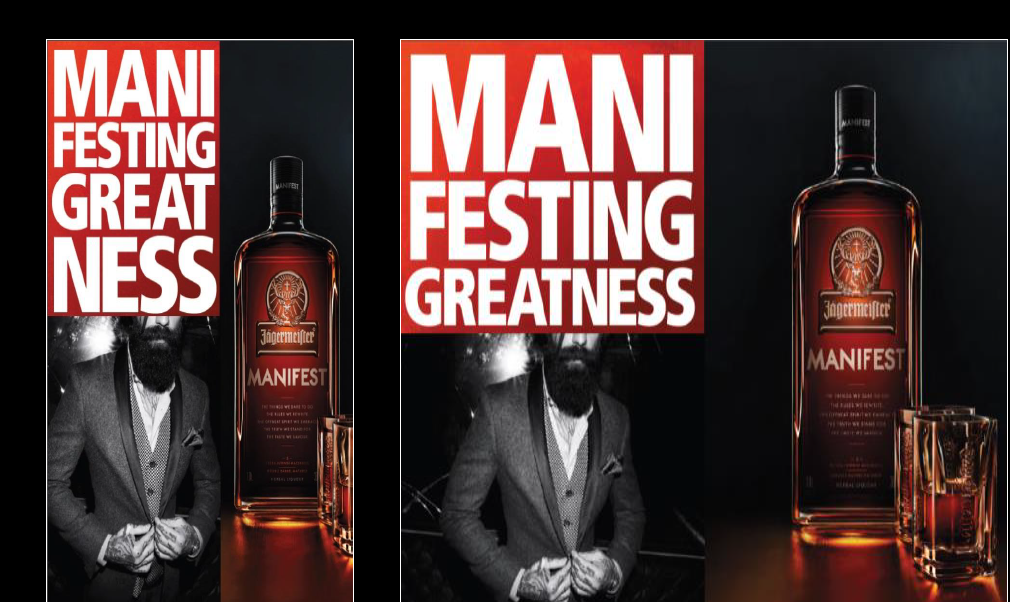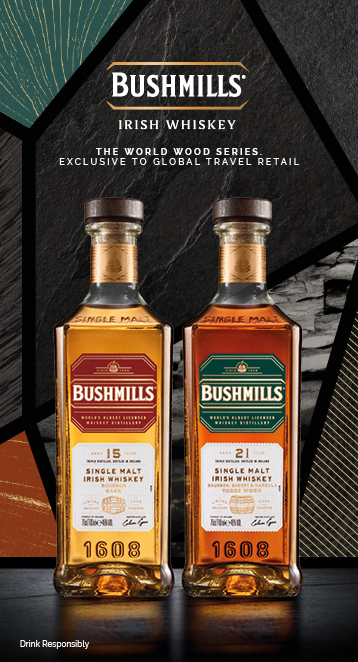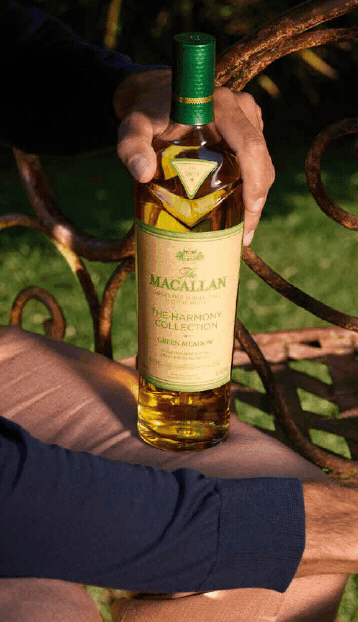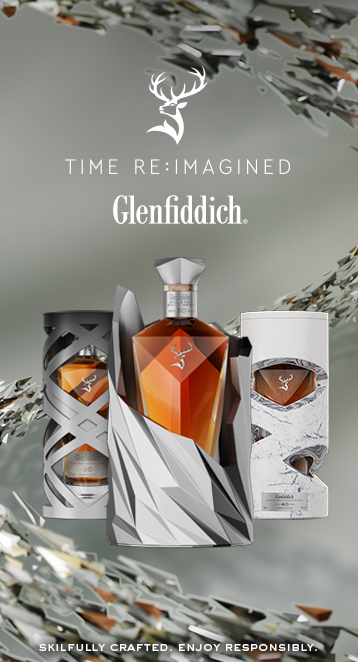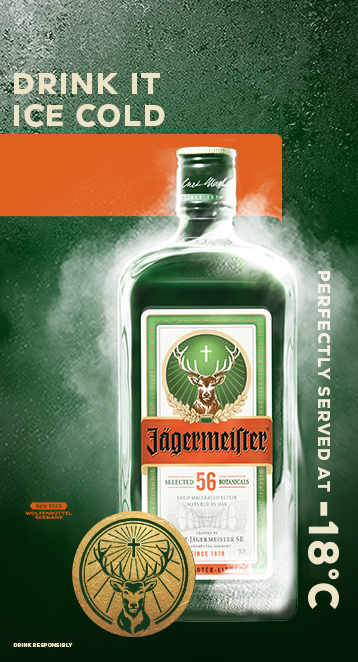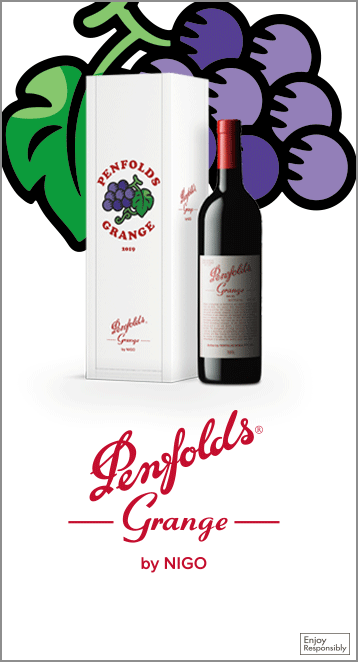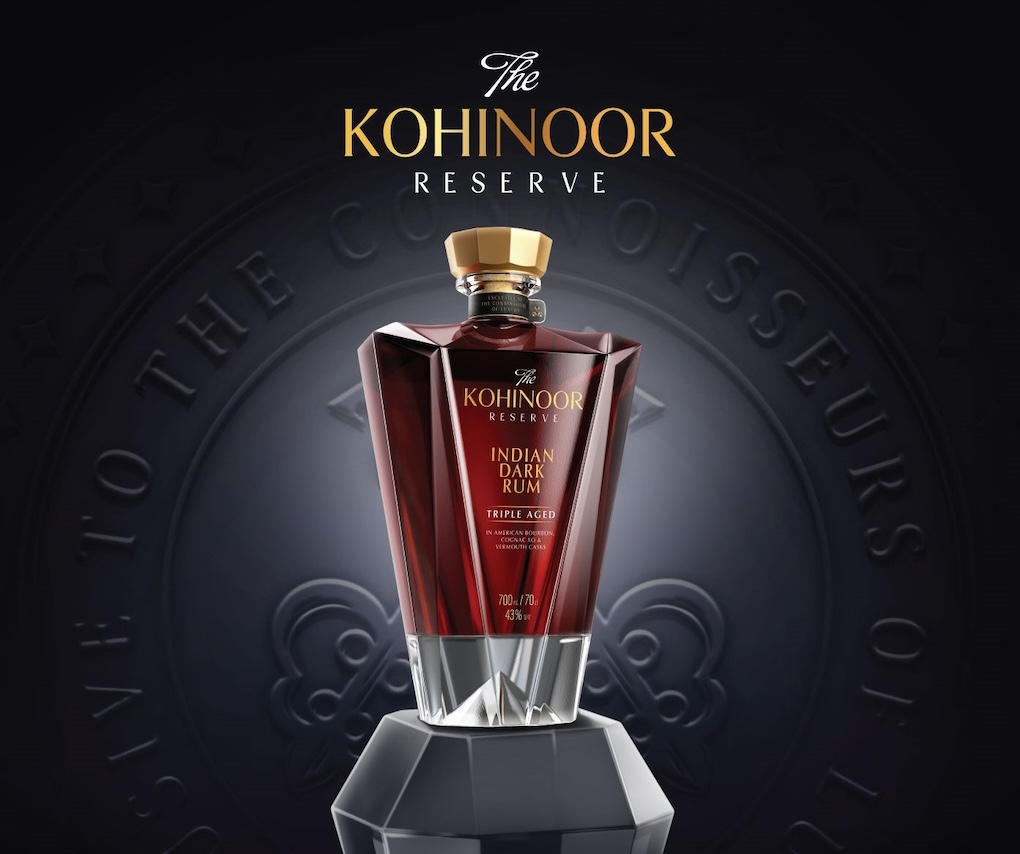Publisher’s introduction: Put away your preconceptions now. Forget those clichéd stories of shots of hard liquor being downed in riotous drinking sessions. Yes, there’s an important place for ‘Jägerbombs’ but in Jägermeister we’re talking about a serious spirits brand that does ultra-serious business.
The German herbal spirit sold nearly 7.2 million 9-litre cases globally in 2017, making it the ninth-biggest premium spirits brand on the planet. It’s also the 13th-biggest premium spirits brand in travel retail despite only focusing on the channel since 2012. In the intervening years it has quadrupled volumes and grew by high double-digits in 2017 to 212,000 9-litre cases. While 2018 results are not yet available , it is reliably understood that travel retail depletions soared once again. Martin Moodie visited brand owner Mast-Jägermeister to discover more.

The story behind the stag Das ist des Jägers Ehrenschild, Jägermeister’s striking logo evokes the tale of Saint Hubertus. Once a wild huntsman, Hubertus had a vision of a mighty stag carrying a glowing cross between its antlers. The vision transformed him and afterwards he championed a greater respect for nature, eventually becoming known as the patron saint of hunters. That story provided Curt Mast – dubbed ‘the meister behind Jägermeister’ – with what he saw as the perfect complement to the elixir that he had concocted in 1934. He adopted the emblem of the stag in dutiful honour of who he saw as the true ‘Hunting Master’. It has been a permanent fixture on the bottle ever since. |
Jägermeister is a fascinating brand with an enthralling history. In a spirits industry dominated by multi-national conglomerates it remains resolutely in the fifth-generation family hands of parent company Mast-Jägermeister.
Its peer group includes global household names such as Smirnoff, Johnnie Walker, Bacardi, Jack Daniel’s, Captain Morgan, Absolut and Hennessy. Trailing in its volume wake are such other powerhouses as Baileys, Jose Cuervo, Jameson, Ballantine’s, Tito’s, Grant’s and many other leading spirits brands.
Internationally, Jägermeister is on fire, particularly in key domestic market reference points for travel retail. In Russia the brand is posting double-digit growth; in China, albeit from a small base, it was up 300-400% year-on-year in 2018, almost entirely through the on-trade.
In Chinese nightclubs it is often consumed together with Champagne, one of the drinks industry’s less likely mixes but apparently a denoter of social status.“We always start in the on-trade to get people used to Jägermeister,” says Head of Customer Development, Global Travel Retail Hans-Manuel Vogt, who believes the platform being laid in the market will provide outstanding leverage in duty free.
If the numbers above are important, so are the following ones. 383. As in the quality checks that Jägermeister must go through. 56. As in the number of herbs, blossoms, roots and fruits in a recipe known by a handful of people and guarded more closely than the keys to the United States Bullion Depository. 98. That’s the number of 2cl Jägermeister shots consumed each second around the world. And 1. As in a mono-brand that has driven one of the great international drinks industry success stories over the past eight decades.
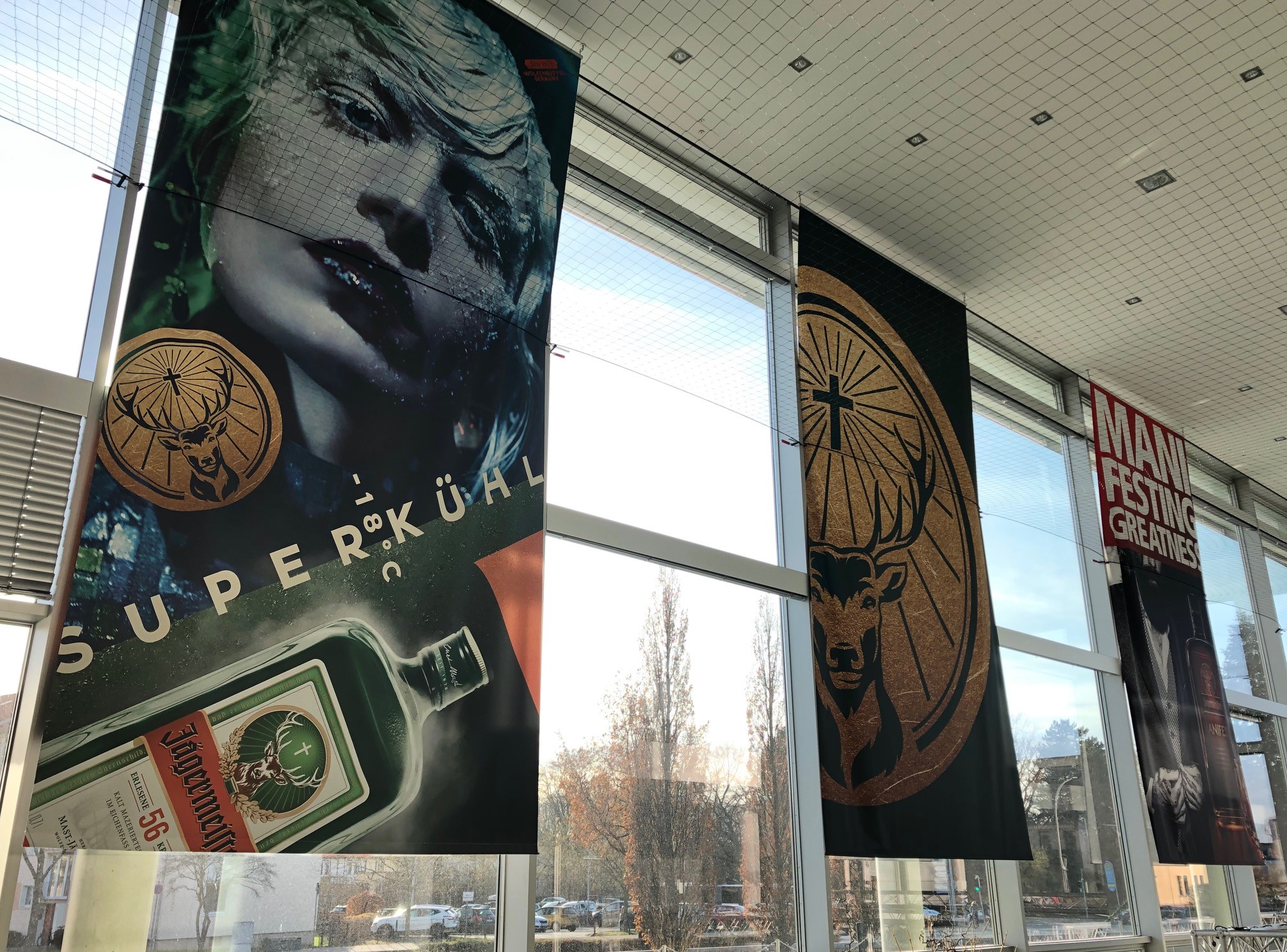
A visit to Mast-Jägermeister’s hometown of Wolfenbüttel in Lower Saxony, Germany uncovers many surprises. In particular, a tour of the distillery puts to bed once and for all any clichés about Jägermeister being simply a hard partying brand. Yes that is part of the fabric but there’s much more. Take a look at the photo below, which shows just 25 of the herbs, blossoms, roots and fruits that go into every one of those 98 shots that is consumed every second around the world. The attention to detail with regard to raw materials and production is astounding.

Every week the Wolfenbüttel production facility welcomes Jägermeister devotees wishing to discover the art, science and passion that goes into every drop of the famed spirit. Visitors are guided through the production process from botanicals to bottle, including the herb cellar and the brand’s huge signature barrel chambers.
Giant oak barrels mature Jägermeister (but do not wood-age it due to the barrels having been neutralised through toasting) for one year, allowing the four different macerates to blend to perfection. It’s a lengthy and complex process that involves 383 quality checks. And while visitors get to see 25 of the ingredients, 31 others are kept in a separate, highly secure area, away from prying eyes

“It’s not a marketing story,” says Head of Public Relations Andreas Lehmann. “Only five people [of whom three are family] can go in and get the remaining herbs.” Those herbs are imported from around 40 countries and much emphasis is placed on provenance, quality and sustainability.
“It all starts with the farmers. We work very closely with them – it’s about quality and sustainability. We know the herbs are the key to our quality, so we respect that.”
Just as Jägermeister is a fusion of ingredients so it is a blend of personalities. If it had been created in the last few years it would have no doubt been dubbed a ‘craft spirit’, such is its beguiling combination of ingredients that would rival the best Indian kitchen or Chinese traditional medicine store. But this craft spirit has been around for over 80 years and is part of a company that is going strong after 140 years.

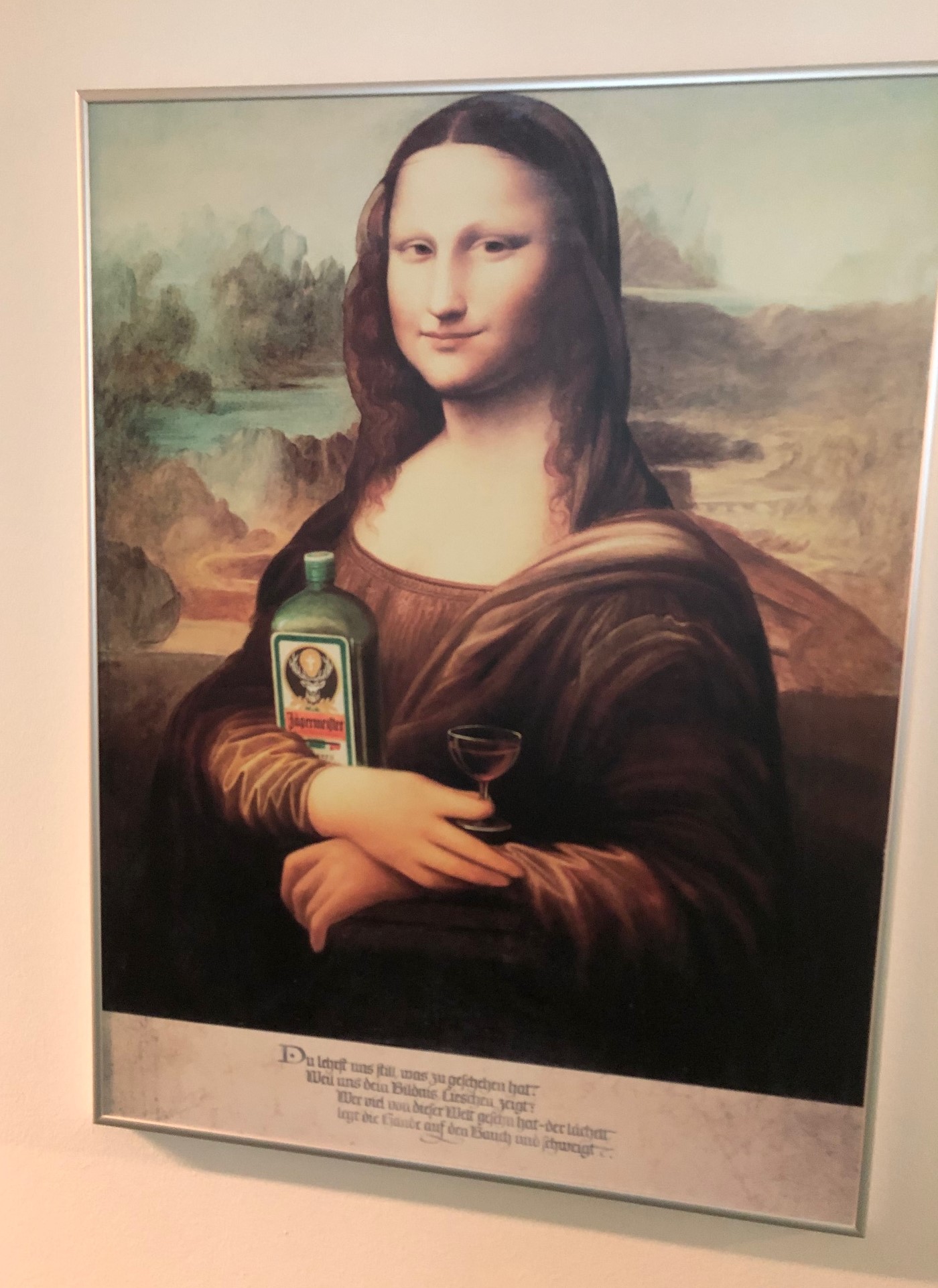
It’s a spirit that somehow straddles being a long-established traditional drink with an irreverent brand personality that constantly challenges the status quo and is very much favoured by the Instagram generation. Its embracing of social media maintains a heritage of near legendary marketing, including a host of cheeky, sometimes risqué but brilliant advertising campaigns through the 70s and 80s.
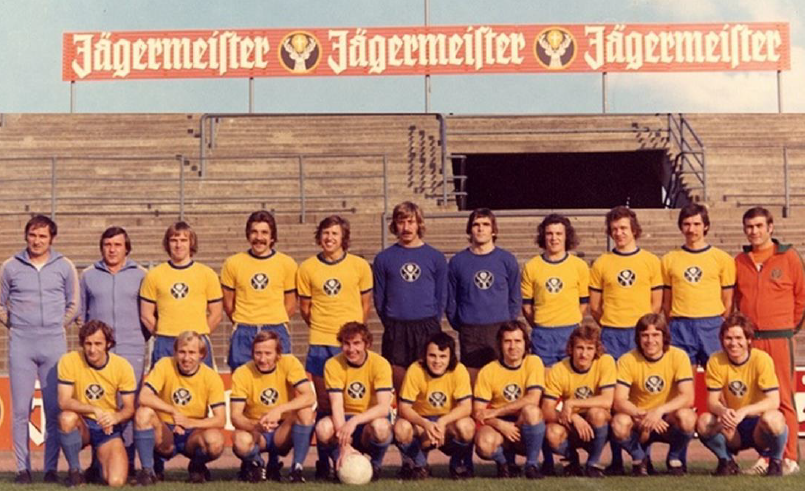

Its focus on quality control is unrelenting, while passion runs through the company and its people like a bloodline, as valuable as a 57th herb but this time not a secret.
During my visit I dined with Chief Executive Officer Michael Volke, a man who is leading the company in a purposeful fashion that never deviates from brand principles for short-term gains. He’s deeply supportive of the travel retail channel and it shows in the numbers cited earlier. When you consider that Jägermeister is on fire in the Chinese on-trade market (another surprise, as is the fact that it is known as ‘Ye Ge’ in China, which roughly translates to ‘wild character’), you know that its future in travel retail is bright indeed.


“How was your day?” Michael asked me as he greeted me for dinner.
“Great,” I joked, “I found out the secret recipe.”
“That’s good,” he replied. “So now we have to kill you.”
The only killing, in fact, was with kindness and hospitality that was as warm as the Jägermeister was cold (-18 below is the perfect serve. I know as I was served several of them). And not only did I survive the Jägermeister experience, I found it deeply illuminating.

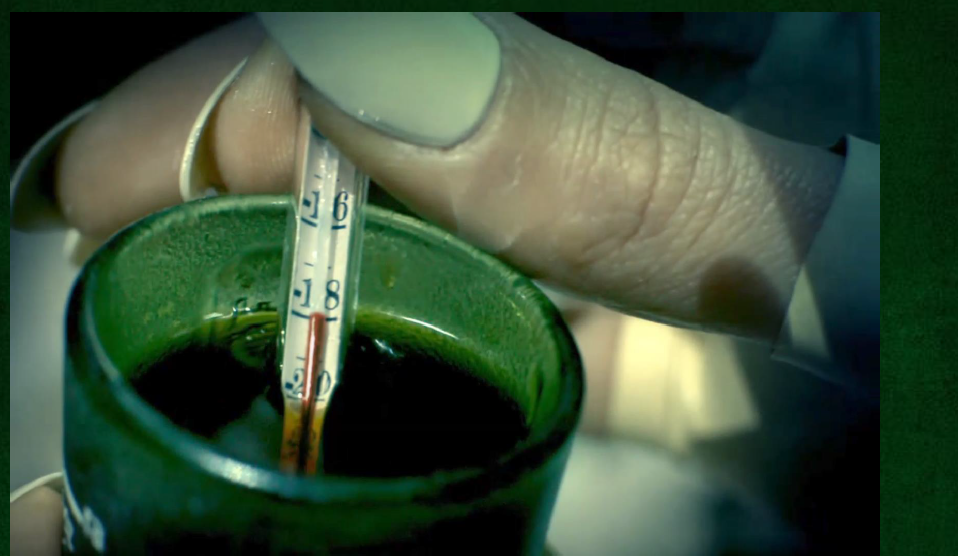
Mast-Jägermeister actually began life as a vinegar producer that also dealt in the filling and sale of wine. Through the ensuing years and generations, it morphed into a distiller of various spirits, with the now legendary Curt Mast beginning the development of Jägermeister in 1934.

History almost oozes from the walls as you walk around the Mast-Jägermeister headquarters in Wolfenbüttel, and finds voice in a unique and oddly beautiful design touch. Long stretches of corridor feature inset strips of broken green glass (under a clear glass barrier), which besides offering a quirky design element, pay home to the origins of Jägermeister.

As a keen hunter, Jägermeister creator Curt Mast wanted a bottle that would stand up to heavy-duty use. To find one, he kept dropping different-shaped bottles onto his oak floor until one survived. It was the now world-recognised square-shouldered bottle. And evidence of all those that didn’t make it can be seen in every step through the company offices.

From the 1960s onwards as the brand’s popularity surged, the company became a monobrand operation, a focus that has served it brilliantly during the intervening decades. Jägermeister stands for ‘Hunter Master’ (a poem about a hunter adorns the bottle, see panel and picture above) but if that sounds ultra-traditionalist, the brand’s personality is both eclectic and contemporary.

Today though, Mast-Jägermeister is keen to tell a story that is neither about old traditions nor shot drinking. “The story we had with Jägermeister for decades was so strong and engaging that we didn’t want to give it up. But we want to put the meister to the Jäger!” says Vogt. “Our ambition is to educate people that there is so much to Jägermeister than Jägermeister bombs.”
Company executives don’t talk about their brand as a bitter but as a “global lifestyle brand”, Vogt insists. “We are our own category,” says Director of Global Travel Retail Dietmar Franke. “Our competitors would be Jack Daniel’s or Jim Beam or Jameson – which are all shot brands consumed by quite a broad age group. If we would limit ourselves to the bitters segment we would not be as strong as we are.”
Duty free boom
The brand’s success in duty free, now Jägermeister’s fourth-biggest market (behind the USA, Germany and UK and one place ahead of Italy) has been pivotal to growing its identity on the global stage. More importantly, it’s being achieved in the right way. “We are growing year-on-year in duty free in a market that is driven by price activity – yet we are not doing price activity,” says Vogt.
“I strongly believe in the global travel retail channel,” says CEO Volke. “It perfectly accompanies our international expansion strategy as a brand-building platform across the regions and serves as unique show window for our global premium brand world.
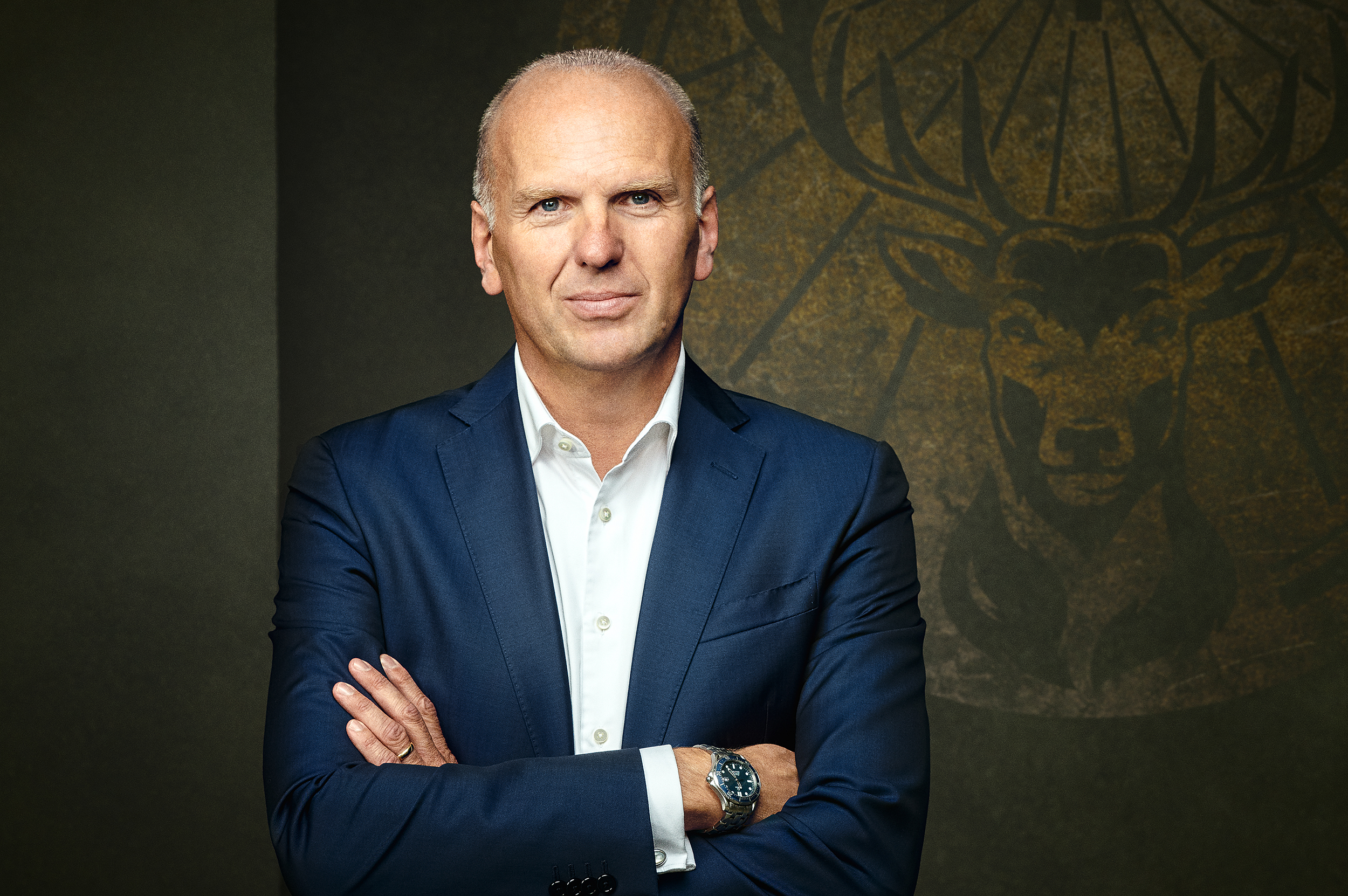
“Jägermeister has really caught up over the course of the last years in the global travel retail channel through focus, creativity and partnerships. It has become a strong top five international market for Jägermeister, and continues to outperform the overall channel growth and gain market share.”
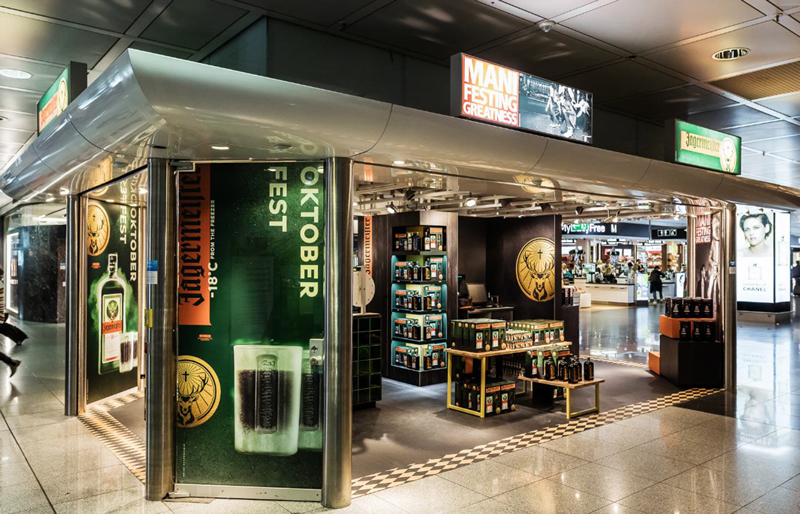
Travel retail has also proved “the perfect qualitative platform to orchestrate our experiential brand world”, Volke says, and to globally build Jägermeister Manifest, the first-ever herbal liqueur super-premium extension (see panel below). “Our core target – the young Urban Life Artists – have been significantly elevating their global mobility and fondness of travelling. The global travel retail channel provides a superior business and communication opportunity against this group of well-off travellers for Jägermeister.”
“Our core target – the young Urban Life Artists – have been significantly elevating their global mobility and fondness of travelling. The global travel retail channel provides a superior business and communication opportunity against this group of well-off travellers for Jägermeister.”


The results of focusing on the channel have been dramatic. In 2007 the brand did just 19,000 cases in travel retail. Even in 2012 it was just 54,000. Five years later Jägermeister hit 212,000, a rise of 25.2% year-on-year. In the same year, 2017, the global duty free market for premium spirits showed 4.7 % growth, while Jägermeister surged by 17.4%, moving up three places within the IWSR top-20 premium spirit lines to #13. The ice-cold brand is on fire and there’s no sign of it being put out.
“All with a team of eight people. Not too bad eh?” says Vogt with a big smile. Not too bad at all.
Manifest, a “liquid business card”, provides new momentum In February 2017, Mast-Jägermeister introduced a new, super-premium string to its bow, the herbal liqueur Jägermeister Manifest. “It’s our statement to the world,” says Head of Customer Development, Global Travel Retail Hans-Manuel Vogt. Adds Director of Global Travel Retail Dietmar Franke: “It was very interesting after we launched it, we had not a single negative reaction after tasting it from either [retail] buyers nor consumers. I have never seen that before.”  The line extension was based on the original Jägermeister recipe but with a twofold maturation process, a greater number of botanicals than the traditional line and, crucially, five macerates instead of four. Manifest is also stronger in alcohol content (38% ABV not 35%) and has been designed to be consumed like a single malt whisky, a sipping shot. Interestingly, the company chose to launch the line extension via a combination of the German premium on-trade sector and exclusively in the off-trade through Gebr Heinemann at seven of the travel retailer’s key European locations – Copenhagen, Hamburg, Amsterdam, Frankfurt, Vienna, Budapest, Berlin and Oslo airports. Just 60,000 bottles were produced in year one while the company gauged early trade and consumer reaction. The results were hugely encouraging. Following a highly successful roll-out, Manifest was introduced to a further 29 airport locations in late 2018, including an extensive partnership with sector giant Dufry in several high-profile airport activations, including Barcelona–El Prat, London Heathrow and London Gatwick airports. “Never in my life, and I am 40 years in this industry, have I experienced such strong reaction to a new product,” says Franke of the initial reaction from the Gebr Heinemann team of buyers.
“It’s a great product in terms of quality, it is exceptional,” says Franke. “It really has legs to stand.” But consumer education about the new line is critical, he says. “Yes, it’s a statement and an attitude but what you learn in retail is that attitude is not enough – you have to first explain it to the consumer and convince them to taste it because it is Jägermeister, so there is a certain expectation. And then you have to convince them to buy it because it’s factor two in price.” On the evidence to date, plenty of consumers are indeed being convinced. |
Gin Sul investment pays off Mast-Jägermeister has long been a determinedly monobrand company. But in July 2018 it also became a shareholder in Gin Sul, the fast-growing Hamburg gin distiller founded in 2014 by Stephan Garbe. The Hamburg gin in the now familiar ivory stoneware jug is one of the biggest success of the craft spirits dynamic that has highlighted the international and German drinks industry over recent times. In an interview with The Moodie Davitt Report last year, Gebr Heinemann said that Gin Sul was the biggest-selling drinks SKU at its Hamburg Airport duty free store. 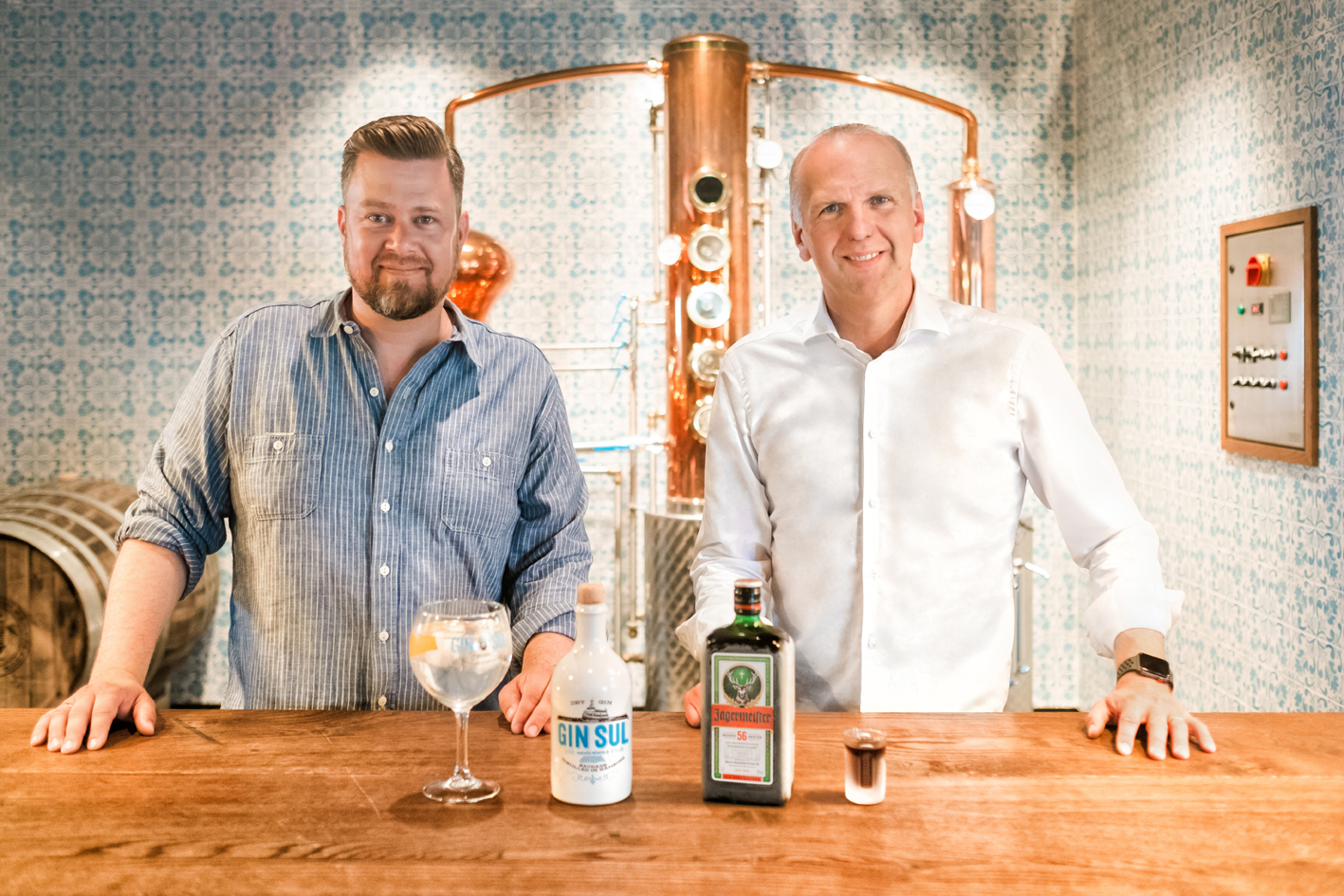 At the time of the deal Garbe stated, “As a relatively young company, in order to someday also be successful abroad, we need an experienced partner at our side. I always knew that only a family company would be able to understand the heart and soul of the Gin Sul brand and for me, Jägermeister is that company. We now have a once-in-a-lifetime opportunity to learn from the very best.” For Mast-Jägermeister, the Gin Sul deal marked the company’s first investment in an external brand. Mast-Jägermeister Chairman Michael Volke said, “Gin Sul is more than an outstanding dry gin in a distinctive bottle; it is a brand that inspires longing and desire. Such authenticity and passion are very rare and, in my opinion, that combination is what drives Gin Sul’s success. I am certain that this partnership will result in great things and that we can both learn a lot from each other.” |
“Of course it’s cold, it’s German.” Jägermeister invested £1 million (US$1.3 million) in a 2018 UK digital advertising campaign designed to deliver 30 million impressions among 18-24 year olds in the lead-up to Christmas. The video below formed part of Jägermeister’s ‘Be the Meister’ global creative campaign which draws on the spirit’s heritage and encourages consumers to be the ‘meisters’ of their own lives. Created by Opperman Weiss in the USA, the film takes viewers on a journey into a whimsical German nightclub where the crowd is led in a toast by the ‘Meister of Cold’, played by supermodel, Nadja Auermann. Together they celebrate the herbal spirit, chilled to perfection at -18 degrees Celsius. |




